Although Intellectual Property, (“IP”) law is a broad and complex topic, it can be easier if you learn a handful of the common terms frequently used.
If you've ever asked yourself things such as:
- What makes an effective trademark?
- How do I protect my IP rights overseas?
- How do I avoid IP infringement claims?
...then this article is for you.
This IP law terms and definitions article outlines over 70 IP law concepts in plain English. It explains important IP law terms, with examples of each one so you can get a solid understanding of IP terminology.
USPTO - United States Patent and Trademark Office
Definition: The United States Patent and Trademark Office, also known as the USPTO, is an agency in the Department of Commerce. It's responsible for issuing federal trademark and patent registrations and is considered international protection of a trademark owner’s rights. The USPTO keeps records of all registered trademarks and patents, including their status, assigned serial numbers, registration dates, and other important information.
Example: Mark's KEWL Coffee brand for his equipment and processes were registered with the USPTO, so that they could be protected.
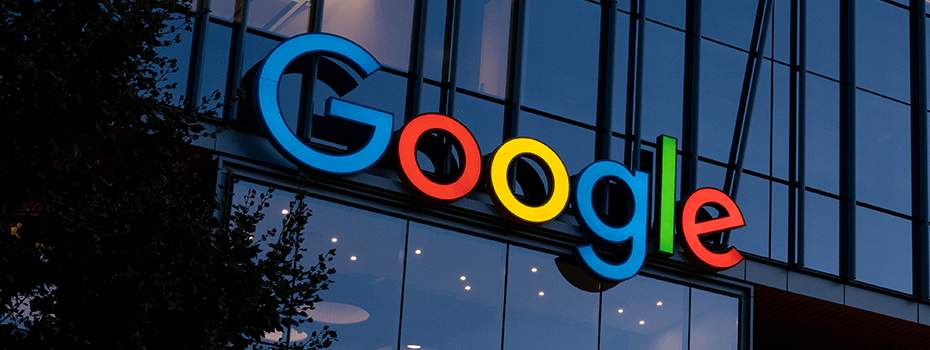
World Intellectual Property Organization (WIPO)
Definition: The World Intellectual Property Organization, also known as WIPO, is an agency in the United Nations that deals with intellectual property protection. They're responsible for things like international trademark registration and policies. They are also one of the major arbitrators with jurisdiction to administer domain name disputes.
Goods and Services
Definition: Goods are anything that can be bought or sold in the marketplace, while services are work provided by one party for another.
Example: Jane's sister has a business selling clothes online, so she is providing goods to her customers. Jane also runs an agency where she helps small businesses launch websites with web design, SEO, and analytics tools, so she provides services to her customers.
Identification of Goods and/or Services
Definition: The identification of goods and services is the part of the trademark application that describes the goods or services for which protection is sought under a proposed trademark. There are 34 classes of goods and 11 classes of services under the Nice Classification used by the USPTO.
Example: Jane would like to register her mark for business consulting, so she consults the USPTO and finds that business consulting is under Class 35.
License
Definition: In the context of intellectual property law, licenses often grant passage to an IPholder's rights in exchange for royalty payments.
Example: IP Co. Ltd., a company that owns the rights to a video game, requires some of its licensees to pay royalties and licensing fees in exchange for the use of their patent and copyrights.

Licensing Agreement
Definition: A licensing agreement is a document that explains the terms and conditions of how one company dictates the use of another company's patents, copyrights, trademarks, and other intellectual property.
Example: IP Company Co. Ltd. has a licensing agreement with its licensees that must comply with certain restrictions and stipulations.
Branding
Definition: A brand is a marketing term for a product or service that creates an image in consumers' minds by linking their perception of the product or service to certain attributes such as quality, value, uniqueness, or status.
Example: Before Nike created its brand, it was just another shoemaker. However, after the Nike brand's debut in 1971, it became a leader in global marketing campaigns. Nike has since become the most valuable shoe brand in America at almost $14 billion US dollars in value.
Intellectual Property
Definition: Intellectual property is a legal term that describes intangible assets, such as copyrights, patents, and trademarks that are created through the intellectual efforts of their creators.
Example: Jane's brother owns a software company, so he has copyrights for his programs and trademark rights for the logo used on his websites.
Certificate of Registration
Definition: A certificate of registration is a document issued by the USPTO that confirms trademark or copyright protection. The certificate contains basic information about the mark, including any claim numbers, the registration number, issue date of the certificate, the mark's owner and their address, and a description of goods or services. It is often used to officially substantiate a trademark claim.
Example: IP Pirate Co., Ltd was able to use a certificate of registration as evidence that IP Company Co., Inc. had prior rights to its "IP" trademark in foreign application filings.
Copyright
Definition: A copyright is an original work fixed in a tangible medium containing a modicum of creativity. It confers a legal right for the copyright owner to control the use, reproduction, performance and distribution of their original work.
Examples: a copyright owner may license or transfer their rights to any literary works, artistic works, sound recordings, sculptural, dramatic works, music, pantomimes, and choreographic works, or computer software to another party.

Assignment of Copyright
Definition: Under section 204, a transfer of ownership is only valid if it's in writing, signed by the copyright owner or his duly authorized agent.
Example: Mike signed an assignment of copyright that transferred the rights to publish his book The Adventures of I & M Mouse from Mike to IP Service Co., Inc.
Fair Use
Definition: Fair use is an exception to exclusive rights granted under trademark or copyright law that allows individuals other than the owner to use the IP, usually for criticism, education, or review. Fair use could potentially be a reason for not taking action against a domain.
Example: Jane's article criticizing the most recent Harry Potter book did not infringe upon the author’s copyright, as Jane’s criticism was protected under fair use.

Cease and Desist Letter
Definition: A Cease and Desist Letter is a form of legal action that seeks to stop the recipient from infringing upon an owner's intellectual property rights. At a minimum, this letter asks them to cease their infringement and prevents them from claiming ignorance of an owner's rights.
Example: IP Pirate Co., Ltd sent a Cease and Desist letter to Jane asking her to stop using its "IP" trademark because it infringed on IP Company Co., Inc.'s registered trademark.
Uniform Dispute Resolution Policy (“UDRP”)
Definition: the UDRP is the process in which a domain registrant and a complainant may appear before an arbitration panel to resolve disputes about domain name ownership.
Example: Target, Inc., discovered that someone registered the domain targert.com, which is a misspelled version of Target’s main website. If Target believes this was typosquatting, they can file a UDRP and have the name transferred to them as the registrant.
Registration
Definition: A trademark registration is an official recognition issued by the United States Patent and Trademark Office (USPTO) that a mark has been used to represent a company since its creation. A registered trademark places others on notice that it belongs to you, affording legal remedies if someone else uses your same or a similar mark.
Example: Mark received registration on his coffee brand trademark KEWL, granting him legal remedies if someone else uses the same or a similar mark for their own.
Service Mark
Definition: A service mark is any word, name, symbol, or device that one uses in commerce to distinguish their services from those provided by others. It is processed and treated similarly to trademarks.
Example: Mark received a service mark on his coffee delivery service after successfully registering his service mark KEWL DELIVERIES.
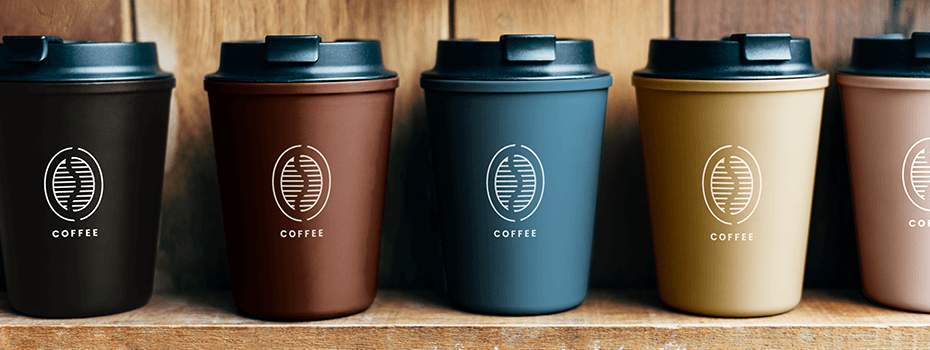
Trademark
Definition: A trademark is a symbol, phrase, or word that's used by a business to distinguish its goods and services from those of others. It can be registered with the USPTO to be afforded expanded protection greater than what a common law trademark receives.
Example: Mark applied for a trademark on his KEWL coffee equipment and processes after finding that no one else was using or had started to use this mark in commerce.
Common Law Trademark
Definition: A common law trademark is a trademark that has been established solely through use in commerce and applied only within the bounds of one's geographical area. Common law trademarks do not hold the same weight as registered trademarks for many US IP disputes.
Example: Joe's Garage has been using its "Joe's Garage" trademark within the New York area for many years but has not filed to register it with the USPTO. Therefore, this trademark is considered common law.
Fanciful Trademark
Definition: Fanciful trademarks are made-up words used as a term to represent specific products or services.
Example: "Zillow" is a fanciful trademark for the company because the word has no meaning outside of referencing the company's products and services.
Arbitrary Mark
Definition: An arbitrary mark does not bear a logical relationship to the products or services.
Example: IP Company, Inc. registered the IP element IP as a trademark for its IP services. IP is an arbitrary mark because it has no logical relationship to IP Company, Inc.'s products or services.
Suggestive Trademark
Definition: A suggestive trademark hints at or alludes to some element of the goods and/or services being applied for. The trademarks typically suggest a quality without directly describing it, such as descriptive marks describing what they are meant.
Example: Mark's coffee equipment and processes were given a suggestive trademark, such as his company name KEWL, which could be related to the cold brew process instead of typical hot coffee.

Descriptive Mark
Definition: A descriptive mark merely describes the ingredients, qualities, function, or features of a good or service and is therefore unable to be trademarked until it acquires distinctiveness through secondary meaning.
Example: The phrase "Whole Foods" would have been considered merely descriptive as a market that sells foods with healthy ingredients. Therefore, it needed to build distinctiveness in its brand through secondary meaning until it could register the mark for federal trademark protection.
Distinctive Mark
Definition: A distinctive mark is a mark that identifies the source of a good or service. A trademark must be fanciful, arbitrary, suggestive, or a descriptive mark that has acquired distinctiveness through secondary meaning to show distinctiveness.
Example: “ZILLOW” is a distinctive mark because it is a fanciful term and “APPLE” is distinctive because it is arbitrary when related to electronics.

Design Mark
Definition: A Design Mark is a Trademark that utilizes more than just the words of the mark. Some design marks will use various fonts, colors, or pictures within their marks, all of which constitute the Design Mark.
Example: Target’s bullseye logo in red and white is a Design Mark. Target, like many companies, will secure both a word mark of just “TARGET” and a design mark containing the complete version of a trademark to allow the use of either or both as needed.
Disparaging Trademarks
Definition: A disparaging trademark is a mark that means something negative about the targeted audience or the product it represents and is therefore against public policy and can be denied registration on those grounds.
Example: A clothing company attempted to register the term "ALLERGY" as a trademark for their line of children's shirts, but it was denied because it would be offensive to those with allergies. This term is considered disparaging because it could also mean that the wearer has an allergy problem and should therefore not wear the product.
Famous Trademarks
Definition: Famous trademarks are those that have been designated as well-known and distinct by the USPTO. In order to qualify for this status, a trademark must be widely recognized by consumers due to the company's long history of successful business operations and/or marketing campaigns.
Example: BMW's blue and white checkered logo trademark was recognized by the USPTO as a famous mark, so the Lanham Act affords it additional protection under federal law.

Incontestable Trademark
Definition: A federal trademark registration that has been unchallenged by any other party in its uninterrupted use for the first five years after the date of registration is considered incontestable, and challenges to its registration and priority can no longer be brought except for exceptional circumstances.
Example: After five years of using her "Super Fast" trademark in connection with energy drinks without receiving any challenges to the trademark registration, Jane's competitors are unable to challenge its registration status.
Likelihood of Confusion
Definition: Likelihood of confusion is the chance of a consumer being confused by identical or similar trademarks in use. This is determined by a seven-part test that compares the owners, the trademarks, the targeted consumers, and other factors. It is a major factor in considering whether to file a domain name dispute complaint.
Example: Jane’s trademark application for “KUWL” coffee was denied for a likelihood of confusion to Mark’s senior mark of “KEWL” for coffee.

Deceptive Trademarks
Definition: A deceptive trademark tends to deceive consumers in its origin, quality, or nature.
Example: A car named "MARCEDES" might be deemed deceptive as it is confusingly similar to the MERCEDES brand of car.
Madrid Protocol
Definition: The Madrid Protocol is an international treaty for protecting trademarks and service marks. This treaty simplifies the process of filing, registering, and maintaining trademark rights in several different countries at once.
Example: Jane has a valuable mark registered under the Madrid Protocol because she can now file applications to protect her trademark internationally with just one application and one fee.
Infringement
Definition: Infringement occurs when a person or company knowingly infringes on another party's trademark. It can sometimes be seen as a criminal act.
Example: Mark's high school peer opened a coffee shop using KEWL trademarks and logos, knowing Mark created the design. This is an example of infringement because the peer infringed on Mark's intellectual property rights.
Trademark Infringement
Definition: Infringement occurs when someone uses a trademark that's the same or similar to another business in connection with selling its products, service, or business. Simply put, it involves one business using another's trademark without permission.
Example: Mike found out that his former best friend was selling coffee equipment and processes under the exact logo, slogan, and trademarks he created. This meant that he was infringing on Mike's mark, and he sued him for it.

Trademark Application
Definition: A trademark application is sent to the USPTO by the applicant to gain federal protection of their common law trademark. It must include a filing fee, certain details or explanations about the mark, and an example of how they are used in commerce.
Example: Mike's KEWL brand logo for his coffee equipment and processes as described and specimens provided as part of his trademark application.
Trademark Electronic Application System (TEAS)
Definition: The TEAS is an online platform that allows business owners to file trademark applications with the USPTO through them. It's designed to be simple and easy for anyone to fill out, regardless of their computer skills.
Example: Mark was able to use the TEAS platform to file his trademark application on his KEWL coffee equipment and processes.

Trademark Registration Symbol
Definition: The trademark registration symbol “®” is a sign displayed on a mark after officially registering with the USPTO. It alerts others that this business is the only one legally allowed to use this trademark in commerce.
Example: After Mark's coffee equipment and processes were registered with the USPTO, he placed the official registration symbol ® on all its products and advertisements.
Trademark Renewal
Definition: Trademark renewal is the process of renewing an existing trademark. A trademark renewal must be filed every ten years from the date of registration. There is no expiration of a trademark as long as it stays in constant and consistent use in commerce.
Example: Mark's coffee equipment and processes had to be renewed ten years after registration to ensure that his trademarks were still active with the USPTO.
Trademark Trial and Appeal Board
Definition: The TTAB is the body of administrative law judges that hears trademark disputes or filing rejections.
Example: Mike's former business partner tried to trademark a confusingly similar coffee equipment and processes with almost the same logo, slogan, and trademarks as Mike. Mike filed an opposition action when Mark was published in the Official Gazette, and the TTAB ruled in Mike’s favor as he was the senior user.
Actual Filing Date
Definition: The actual filing date of a trademark application or registration is the day that it was submitted to the United States Patent and Trademark Office.
Example: The actual filing date for Mark's KEWL coffee equipment and processes was July 15, 2015.

Amendment to Allege Use
Definition: Amendment to allege use is a request filed with the United States Patent and Trademark Office (USPTO) in order to add goods/services after a trademark has been registered.
Example: IP Co., Inc. files an amendment to allege use for additional products that it sells, such as hats and shoes. IP Co., Inc. has the IP rights to IP Company, Inc.'s product names, logos, and slogans. IP Co., Inc. wanted to include all of these IP elements in its IP registration for IP Company, Inc.
Anti-Trafficking in Trademarks
Definition: Anti-trafficking in IP rights is when IP pirates (often overseas) register IP elements such as company names and product logos in order to sell them back to IP owners.
Example: IP Company, Inc. filed an anti-trafficking application with the USPTO for its IP registration. Shortly after filing the application, IP Pirate Co., Ltd registered IP rights to IP Company, Inc.'s IP elements in the IP office of IP Country, Ltd. As a result, IP Company, Inc. took legal action against IP Pirate Co., Ltd through an allegation of trafficking in IP rights under 15 USC §1125(a).
Cancellation Proceeding
Definition: A cancellation proceeding is a proceeding where an individual requests invalidation of trademark registration because its registration will cause them undue harm.
Example: Mike filed a cancellation proceeding against IP Co., Inc.'s "IPNow" trademark because his trademark “TMNow” would be diluted and tarnished from a likelihood of consumer confusion regarding the marks.
Certification Mark
Definition: A certification mark is a symbol or word used on products or packaging that indicates that an organization has certified the product's quality, accuracy, origin, or other characteristics.
Example: The "UL" certification mark is used on many products to signify that the product meets certain safety standards and that it has been tested by the Underwriters Laboratory (“UL”), a private company devoted to testing products for safety.

Collective Mark
Definition: A collective mark is a trademark that identifies the members of an organization.
Example: The "MLS" collective mark, which stands for the Major League Soccer team association, is used by all MLS teams and identifies the members of this group.
Code of Federal Regulations
Definition: The Code of Federal Regulations, or CFR, is a compilation and codification of the general and permanent rules published in the Federal Register by the executive departments and agencies of the US Federal government.
Example: IP Pirate Co., Ltd was able to use the Code of Federal Regulations as evidence that IP Company Co., Inc.'s "IP" trademark was not generic.
Compilations
Definition: A compilation is a work formed by collecting and compiling preexisting materials or data which are selected, coordinated, or arranged in such a way that the resulting work as a whole constitutes an original work of authorship.
Example: A compilation of inspirational quotes from different authors that a publisher has compiled would be copyrightable as a compilation.
Contributory Infringement
Definition: Contributory infringement is when a person or company knowingly helps another person or company to infringe on someone's trademark
Example:Mark’s coworker starts manufacturing goods with Mark’s KEWL logo on them. Mark’s employer, knowing these are made by the coworker without Mark’s consent, agrees to sell the goods in its store. Mark’s employer is liable for contributory infringement.
Disclaimer
Definition: A disclaimer is a statement that limits the scope of a term so that it does not include something that it might otherwise be able to cover.
Example: Little Brand, Inc. puts disclaimers on its trademark registration to disclaim any use of the term “Little” or “Brand” by themselves and only has trademark protection when the entire phrase is used.
Divisional Patent Application
Definition: A divisional patent application is when you submit a second patent application for an already-filed parent patent. This is done when multiple inventions in the original patent application need their own protection.
Example: Mark's KEWL Coffee equipment and processes were protected with a divisional patent because he had 13 different products that needed their own protection.

Examining Attorney
Definition: An examining attorney is an employee or agent of the United States Patent and Trademark Office who analyzes trademark applications to determine whether they are acceptable for registration under USPTO rules.
Example: The examining attorney gave Jane's trademark application for "BUTTERFLY" a final refusal because there were other trademark registrations in the applied-for class of goods already filed for it.
Generic Terms
Definition: A generic term is a word that merely describes the characteristics of a good or service rather than the source of the particular product or service. Most domain names that are comprised of only generic terms are not considered good domain name dispute candidates.
Example: Xerox is a brand of a photocopy machine, whereas "photocopy" is the generic term for "to make copies of an original by means of photography."
Informal Application
Definition: Informal application refers to an application that does not have all the elements required for filing. The USPTO will return these applications to applicants.
Example: IP Company Co., Inc. filed an informal application for its trademark, but it was returned because the company did not include a signature and verification, so they made changes to their application and re-filed it.
Intent to Use
Definition: An intent to use application is a trademark application that identifies goods or services that are not yet in use by the applicant but which will be used within six months of the Notice of Allowance.
Example: IP Company Co., Inc. filed an intent to use application for its trademark, which means that they have not used the mark in commerce, but they plan to use it in connection with the designated products and services in the next few months.
Interstate commerce
Definition: Interstate commerce is the movement of goods and services between two or more states. This requirement to register a trademark with the USPTO has effectively been preempted through the use of the internet as companies are no longer as geographically constrained as they once were.
Example: Jane's business sells products online to customers in different states; therefore, she is engaging in interstate commerce.

Invention
Definition: An invention is a device, process, or method that is new and useful. In order to be patented, an inventor needs to show novelty and usefulness as part of the USPTO process.
Example: Mark's KEWL TVs used a new type of screen unthought of by anyone else that allows for the best resolution available.
Office Action
Definition: An office action is a letter sent to the owner of a trademark application indicating that its mark is not being approved as submitted and describing the reasons for such. The letter further requests an opportunity to respond within six months of receipt.
Example: Mark received an office action from the United States Patent and Trademark Office(USPTO) informing him that his trademark application will not be approved as submitted because Jane's coffee company already holds a federal registration for the same name.
Opposition Proceeding
Definition: An opposition proceeding is a trademark dispute where one party files an objection to the registration of another party's mark on the grounds that it violates their rights in some way.
Example: Jane's coffee company sued Mary's coffee company over Mary using its logo, which was already registered as a trademark with the United States Patent and Trademark Office (USPTO).
Patent
Definition: A patent is the grant of a property right to an inventor, issued by the United States Patent and Trademark Office (USPTO). The patent grants exclusive rights for the use of an invention, defining what can be patented and setting limits on this protection.
Example: Mark obtained a patent for his coffee equipment and processes and applied for federal registration.
Phonetic Similarity of Trademarks
Definition: Phonetic similarity of trademarks is when two or more words bear a resemblance in sound, and this may confuse consumers.
Examples: WHIZZ and WIZZ, JAYBIRD and J-BIRD, JACUZZI and JACKUZZI, and XCEED and X-SEED
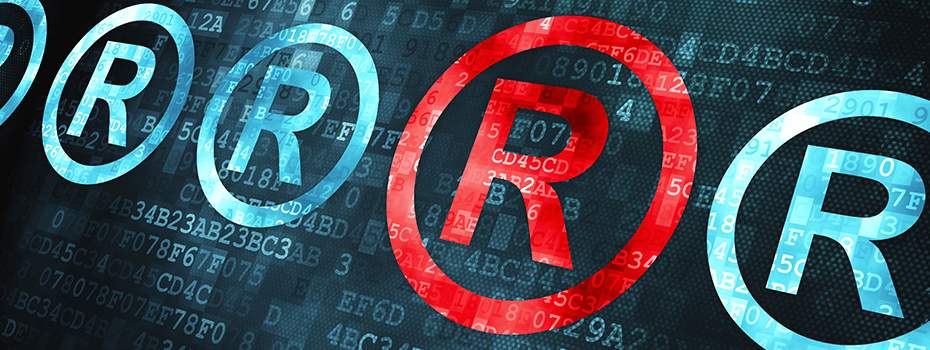
Junior Registrant
Definition: A junior trademark registrant is someone who tries to register the same or similar mark prior to the senior user, but their ownership rights do not supersede those of the senior trademark owner.
Example: Jane was unhappy to learn that Mark had been using his coffee company's logo first, even though he did not register it with the USPTO. Jane is the junior registrant because her logo is similar to Mark’s.
Principal Register
Definition: A trademark registration on the principal register means that you are recognized as the owner of your mark in all 50 states unless otherwise stated in the registration certificate.
Example: Jane was granted federal registration for her coffee company's logo on the principal register.
Prior use
Definition: Prior use is when a party uses a trademark before the applicant first uses their trademark.
Example: Mary used the BELLY JEANS trademark in association with her clothing business, and it became well known and established prior to Mike’s use of the same mark.
Priority actions
Definition: When an application is ready to be published but has some outstanding issues that need clarification from the examining attorney before they can move forward with publishing their findings. These letters are known as priority actions and will list all of your requirements in order for you to get approved again by issuing one after consulting either yourself or someone acting on behalf thereof.
Example: Mark received a priority action for his application, asking him to respond within three months or his application would be abandoned.
Prosecution
Definition: Prosecution is the process of acquiring an allowance after filing a patent application in the U.S. Patent & Trademark Office.
Example: Mark had his application for a patent on his coffee equipment and processes allowed after successfully completing the prosecution process.
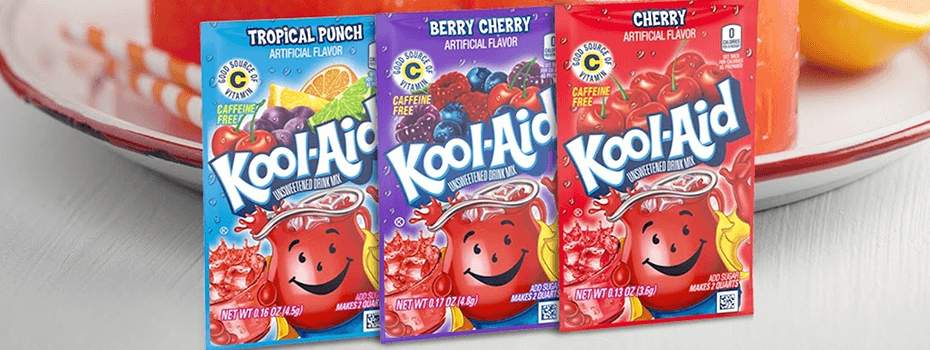
Pseudo Mark
Definition: A pseudo mark is a word that is an alternate spelling or intentionally misspelled version of a word that is protected by an existing similar mark.
Example: Mark has the trademark rights for the word KEWL-AID because his business uses it under a pseudo-mark to separate it from the more famous KOOL-AID mark.
Reexamination Process
Definition: A reexamination process is an examination of a prior or currently existing trademark registered with the United States Patent and Trademark Office (USPTO). This action may be started by anyone who believes that the registration of a prior or currently existing trademark may be in violation of the law.
Example: Mary began to use her mark with jellybeans, and another company protested it as confusing consumers regarding their trademarks. The USPTO then initiated a reexamination process to determine whether there was any basis for this claim.

Senior User
Definition: A senior user of a trademark is the person or entity that first used it. A senior user has priority over junior users by filing for protection and obtaining their registration with the federal government before someone else has an opportunity to do so themselves.
Example: Mark was the senior user of the trademark KEWL, because he used it first on his new coffee equipment and processes. His company had rights over later companies in the same international class using the same or similar marks.
Statement of Use
Definition: A statement of use is a declaration that one has started using their trademark in commerce, followed by all necessary evidence to prove this claim. It's an official part of the trademark registration process.
Example: Mike submitted his statement of use to the USPTO office, where they verified that he had used it in commerce.
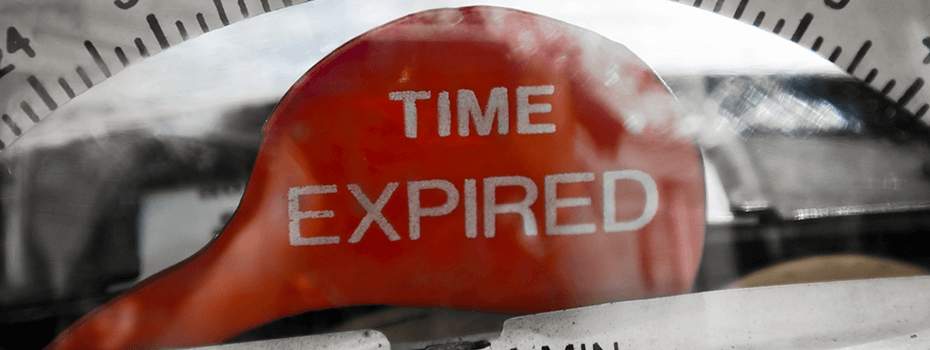
Statute of Limitations
Definition: A statute of limitations is a time limit for the taking of an action, typically filing a lawsuit or opposing a ruling. Once this period has passed, one can no longer bring an action related to that matter. It is different for each state, with most having it at five years.
Example: After Mark's coffee equipment and processes took off sales-wise, Mary decided to sue him for trademark infringement. She had to file the complaint within the set time frame of five years after she first noticed his company was using that same or similar mark in commerce.
Supplemental Register
Definition: The supplemental register is a secondary trademark registry. It holds marks that are not inherently distinctive, nor have they acquired distinctiveness through use yet. Once it acquires distinctiveness through secondary meaning, the USPTO will move the mark to the principal register.
Example: Mike’s COOL mark for his cold brew coffee process was determined to be descriptive and was listed on the Supplemental Register until he acquired distinctiveness through secondary meaning in his mark from consecutive use for five years.
Trade Dress
Definition: Trade dress is any non-functional and distinctive design of a product, such as its packaging and labeling.
Example: Mike’s packaging color choices for his coffee equipment comprise the trade dress. It included the bright blue packaging and labels with his logo to indicate that they were his products and services.
Trade Secret
Definition: A trade secret is any confidential formula, process, or device that gives one business an advantage over competitors. It can be used in various types of businesses, such as manufacturing and services. However, a trade secret has no registration requirements, as publishing it would defeat the purpose. A trade secret may be protected as long as it remains undisclosed.
Example: Mike’s formula for processing his coffee beans could be considered a trade secret because it gave his business the competitive edge to succeed beyond all other companies similar to him.

Use-based Application
Definition: A use-based application is one where trademark rights are given to a trademark that has been used in commerce. This is typically a prerequisite before submitting an application for federal trademark registration. The United States operates on a Use-based system. Many other countries operate on a registration-based system, where no trademark rights are given until registration.
Example: After Alice started selling her handmade bracelets under the name "Panda," she decided to file a federal trademark application. By using her mark in commerce, she already has a common law trademark in her brand but wanted the additional protections provided by a federally registered trademark.
Use in Commerce
Definition: For goods, use in commerce refers to the product being sold and transported within the United States in an ordinary course of trade with a brand preferably displayed on it or its external materials such as packaging, tags, and labels. To be federally protected, that use must occur in interstate commerce. Otherwise, a registrant may pursue a less expansive state trademark.
Example: Mark had been using his KEWL Coffee equipment and processes in interstate commerce for more than five years before filing for federal trademark registration.
Utility Patent
Definition: A utility patent is a form of intellectual property that protects the functional elements of an invention. An inventor can get a utility patent for any device, machine, manufactured item, composition of matter, or process that has a novel and useful purpose.
Example: Mark's KEWL Coffee equipment and processes were protected by utility patents because they were machines with novel and useful specific functions (heating water and coffee, grinding beans, and other parts of the process.)
Word Mark
Definition: A word mark is a trademark that uses only words to represent the product or services being sold. There is no additional claim to stylized characters, font, color, or other features of the mark.
Examples: KFC, Google, Apple, IBM, Microsoft. These companies all have multiple trademarks, a basic word mark, and then the more stylized design marks to incorporate their colors, fonts, or images included in their brands.
